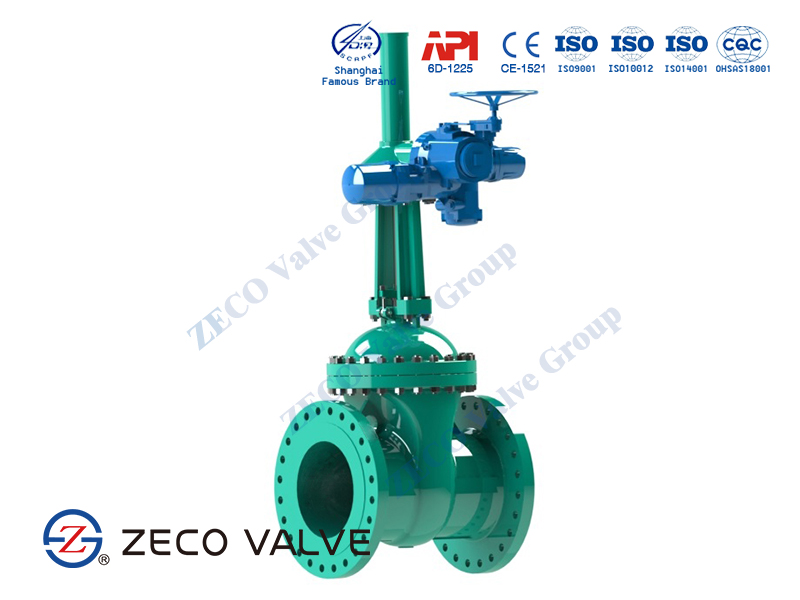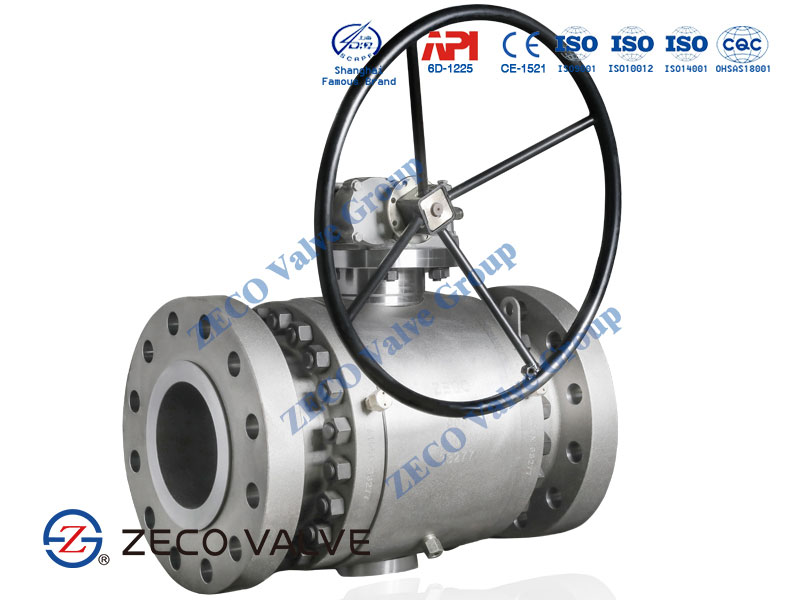

1. Ball Valve Working Principle and Gate Valve Working Principle
Ball valve: the opening and closing parts (ball) is driven by the valve rod and rotate around the axis of the ball valve. The ball valve is mainly used to cut off, distribute and change the flow direction of the medium in the pipeline. It can be closed tightly with only 90-degree rotation and a small rotation torque. The ball valve is most suitable to be used as a switch and shut-off valve, a v-ball valve.
Gate valve: the gate is the gate, the movement direction of the gate is perpendicular to the direction of the fluid, the gate valve can only be fully open and fully closed, and cannot be adjusted and throttled. The gate valve is sealed by contact between the valve seat and the gate. Usually, the sealing surface will be overlaid with metal materials to increase wear resistance, such as overlaying, stainless steel, etc. The ram has a rigid ram and elastic ram. According to the different rams, the gate valve is divided into a rigid gate valve and an elastic gate valve.
2. Characteristics of Ball Valve vs Gate Valve
Ball valve: wear-resistant; good sealing performance; because the seal of hard seal ball valve is manually ground, it can only be used until the valve core and sealing ring are completely consistent.
Therefore, its sealing performance is reliable; the switch is light; because the bottom of the sealing ring of the hard sealed ball valve uses a spring to tightly hold the sealing ring and the valve core together, the switch is very light when the external force exceeds the pre tightening force of the spring; the service life is long.
Gate valve: lightweight, the body is made of high-grade nodular cast iron, the weight is about 20% ~ 30% lighter than the traditional gate valve, convenient for installation and maintenance; flat bottom gate seat; the whole body is covered with glue, not easy to fall off and has good elastic memory; precision casting is used for the precision casting of the valve body, and the precise geometric size makes the valve body without any finishing to ensure the tightness of the valve.
3. Operation Differences of Gate Valve vs Ball Valve
A ball valve uses a rotary ball with a bore and a stem as seen in Figure 1. When the handle attached to the stem is turned, it rotates the ball to open or close the valve. This valve is also called a quarter turn valve because the handle only needs a 90° turn (quarter turn) to allow or block the flow of the media. The valve is open when the handle is parallel to the pipe and it is closed when the handle is perpendicular to the pipe.
A gate valve uses a gate to control the flow of the media. A gate is a solid disk structure that is connected to the stem. The gate is lifted to open the valve and is returned down to its original position to close the valve. The valve is accompanied by a bonnet which when rotated controls the position of the gate. This valve is also called a multi-turn valve because it takes more than a 360° turn to fully open or close the valve.
4. Common Application of Gate vs Ball Valve
Ball valves and gate valves are both extensively utilized in residential and industrial applications. However, these two types have differences in their usage:
- A ball valve is better suited for applications that require rapid opening and closing speeds or during crises due to its quarter-turn on/off function. A gate valve takes longer to operate than a ball valve since it requires more than a 360° turn.
- Gate valves are commonly found in older plumbing systems that do not require frequent shutoffs. They are used in large water supply systems because of their direct flow path and lack of flow constraints, whereas ball valves are increasingly being employed in new plumbing systems that require frequent shutoffs.
- Low-pressure applications are suited for both ball and gate valves. A gate valve, on the other hand, is better suited to high-pressure applications. This is due to the ball valve’s rapid opening and closing, which can create a water hammer.
- Since gate valves are easier to clean and maintain, they are commonly employed with slurries and viscous media while ball valves are not ideal for this end; because they are hard to clean, and slurry particles can harm the rotary ball.
- Ball valves are frequently utilized in fire suppression and marine applications. Ball valves are hard to clean and may cause contamination, thus they are best avoided in food, beverage, and pharmaceutical applications.
- Gate valves are utilized in high-temperature, high-pressure settings such as power plants, mining, and water treatment.
Are Ball Valves Better than Gate Valves?
To settle the ball valve vs gate valve debate, we opened up the discussion to leading Scottish industrial valve distributors, BM Engineering Supplies, who stock both valve types. They stated that the benefit of a ball valve vs a gate valve is that they seal much tighter, therefore making them better at avoiding leakage than gate valves. This is due to their 100% shut-off characteristics. In addition, they are also easier to use than gate valves, offering both lower rates of failure and greater longevity.
The durability of ball valves makes them an ideal choice for shutoff applications. They perform consistently well after many cycles, as well as boasting reliability and the ability to close securely even after long periods without use. For these reasons, they are often preferred over gate and globe valves.
ZECO company supplies both ball valves and gate valves with high quality. Click to know more about our ball valves for sale and gate valves for sale. We are sure to provide you with the best service.












